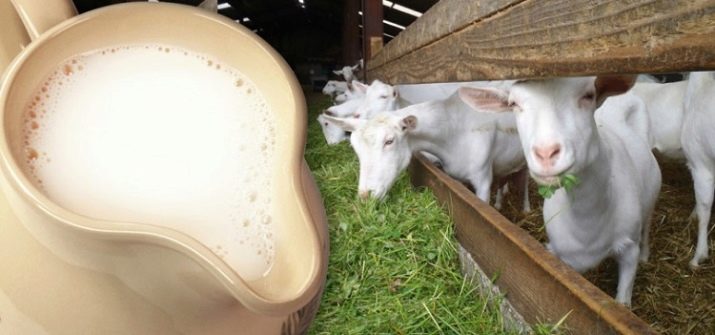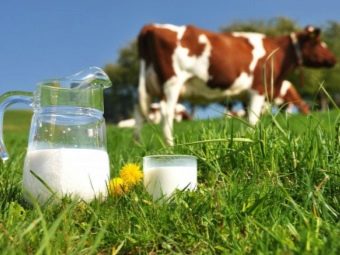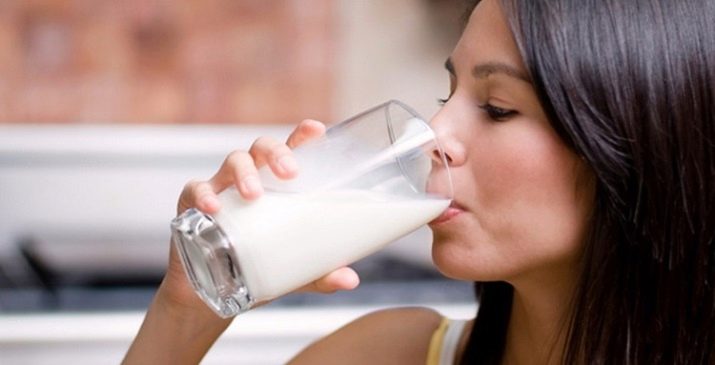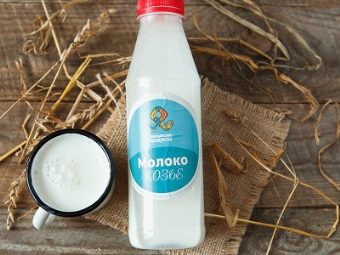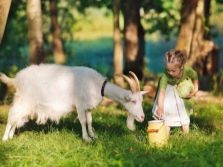How rich is goat milk?
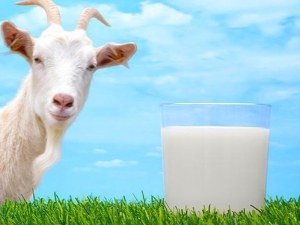
Goat's milk is associated with the majority of exotic, but, thanks to the unique composition and taste, its popularity is growing every day.Of particular interest to goat milk are residents of countries leading a healthy lifestyle and applying solely for the consumption of healthy food.
Product fat
This useful product is suitable for any person regardless of age. A couple of glasses of drink per day satisfies the human need for vitamins and minerals. For maximum benefit and health promotion, the intake of a medium-fat product is recommended. This figure is 4.4% and is quite high. But despite this, the absorption of goat milk by the body is one hundred percent. This circumstance is due to some properties of fats contained in the product.
The most reliable determination of the fat content of a product is obtained only in a laboratory equipped with special instruments, but it can also be checked at home by pouring 100 ml of fresh goat milk into a regular glass. After a few hours, the product will exfoliate and the cream will rise. It is enough to measure with an ordinary ruler the thickness of the layer of risen cream, after which, taking the level of all the liquid as 100%, calculate the percentage of fat content. When using a graduation glass, there is no need to use a ruler. The main importance in determining the fat content, along with many other factors, is the breed of the animal. It is known that animals in which the increased fat content of the product does not give large yields.
Thus, a zaanensky goat, with appropriate care and feeding, is able to produce about one ton of milk per year, and after lambing, much more. The average fat content of the product will be 3.2%. Toggenburg goat yields 1000-1500 liters of product with a fat content of approximately 3-4.5%. 700 liters of milk with fat content reaching 5.5% can be obtained annually from the Russian goat. High-fat milk is obtained from the Nubian goat, but the volumes are low. High-quality and fairly fat milk, above 5%, while not having a specific smell and having a sweet taste, is the advantage of the Cameroonian dwarf goats.
According to official documents from veterinary laboratories, the USSR occupied leading positions in terms of goat milk. Until today, these positions are unchanged. It should be noted that in Russia the Zaanen goat is officially listed in the register of breeding achievements, that is, approved for use on farms.
Comparison with a cow
Domestic goat's milk is a balanced nutritional product with a nutrient content, the absence of allergens, in many respects superior to cow's milk.
As a percentage of the content of proteins, fats, carbohydrates, as well as calcium, potassium and magnesium, goat milk, of course, leads. Thus, the daily dose of calcium in this product is 33%, and cow's milk contains only 28% of this mineral. Vitamin A is also present in goat milk, which has a beneficial effect on the skin and is one of the most effective means of combating skin diseases. Sialic acid, which is part of the goat product, a positive effect on the immune system and protects against many diseases.
The nutritional value of goat milk, obtained in a farm, is 168 calories, the caloric content of the same domestic goat milk per 100 grams will be only 68 calories. The level of fatty acids, which counteract the deposition of fat in the body, in goat milk, in contrast to cow's milk from 15-20%, is 30-35%. These fatty acids also help lower cholesterol and cure gastrointestinal diseases.
Goat's milk from cow's milk has a lower content of milk sugar. This feature allows the goat to be easily absorbed by the human body suffering from a lack of lactase. Another property that distinguishes goat from cow's milk is the absence of casein type A1 in goat milk, which causes allergic reactions.The use of this protein can provoke diseases such as irritable bowel syndrome, colitis, various eczema. The content of casein in the composition of this product depends on the breed of goat, and it is represented in the composition of goat milk by another variety - casein type A2, similar to that contained in women's breast milk. That is, the quality characteristics and protein composition of the milk fully meet the needs of the human body.
In terms of fat, cow's milk is divided into several types. On average, depending on the breed of the cow, the product contains about 3.2% protein, 3.6% fat, 4.7% lactose and 0.7% minerals. Milk fat content of 0-1% is skimmed and is used as a diet food. The most popular options include cow's milk with low fat content - 1-2%. The fat content of 3.5% is considered to be an indicator of fresh milk, and from 4.5% and higher - a product of high fat content, which give certain breeds of cows.
Due to the initial increased fat content and good absorption of goat milk can be used instead of skimmed cow's milk, while following the diet for patients whose body needs fats.
Thus, the content of nutrients in the goat product, compared with the cow, predominates. But with all these advantages, goat milk will not soon replace cow milk in the commercial process due to the high level of production and marketing of the latter, as well as the variety of products that can be obtained from cow milk.
Deliveries of sterilized goat milk to the market with a shelf life of more than half a year by few companies that began their commercial activities in the crest of healthy eating fashion were doomed to failure. This idea was intended to teach the adult population to drink goat's milk. But a wide coverage of the market with this approach is impossible, since long-term storage deprives this useful product of freshness and, consequently, of healing properties.
How to increase the rate
The quality of the milk of a specific goat depends on hereditary and acquired factors. The decrease and increase in the milk fat content can be adjusted by appropriate care of the animal and its diet. Successful feeding of goats for these purposes is effective only if the right balance between different feeding methods is observed. In the summer, mostly goats feed on grass, and in winter, hay. However, feeding the animal only grass and hay is fraught with bad milk yield, so the goat needs additional feeding. In the summer period, garden leaves, silage, vegetables, and fruits are saturated foods for goats. In winter, most of the diet is rough food - hay, straw, brooms.
The diet and feeding procedure must be observed in accordance with the season of the year, the weight of the goat, taking into account other physiological features. In relation to the animal, giving high yields, it is important to comply with all norms. For good product quality and high yields such goats need proteins that are found in concentrated feed. The amount of vitamins and minerals consumed by animals, especially calcium and phosphorus, also requires attention. During lactation, goats should be given bran, roots, tubers, legumes. To increase the fat content of the product, feeding in the spring and summer period with concentrated feeds is necessary.
For the winter, the goat, in addition to hay, must also prepare vegetables: fodder beets, rutabagas, pumpkin, sunflower hats can be fed. An increase in the feed content of protein components is also necessary. The protein-vitamin mineral concentrate contributes to the increase in milk yield, fat content and protein in the product.
What to prefer
Each consumer sets the priorities in the use of a particular milk individually, based on specific preferences and necessity.For those who prefer goat milk, it is necessary to know that the product available at retail is inferior in its qualities to fresh domestic milk. For daily intake of curative goat's milk, the ideal option seems to be purchasing a goat with all the ensuing consequences in the form of care and feeding.
If there are all the necessary conditions for keeping a goat, you can do this as a hobby, that is, combine the useful with the pleasant.
See the following video on the benefits and harms of goat milk.



